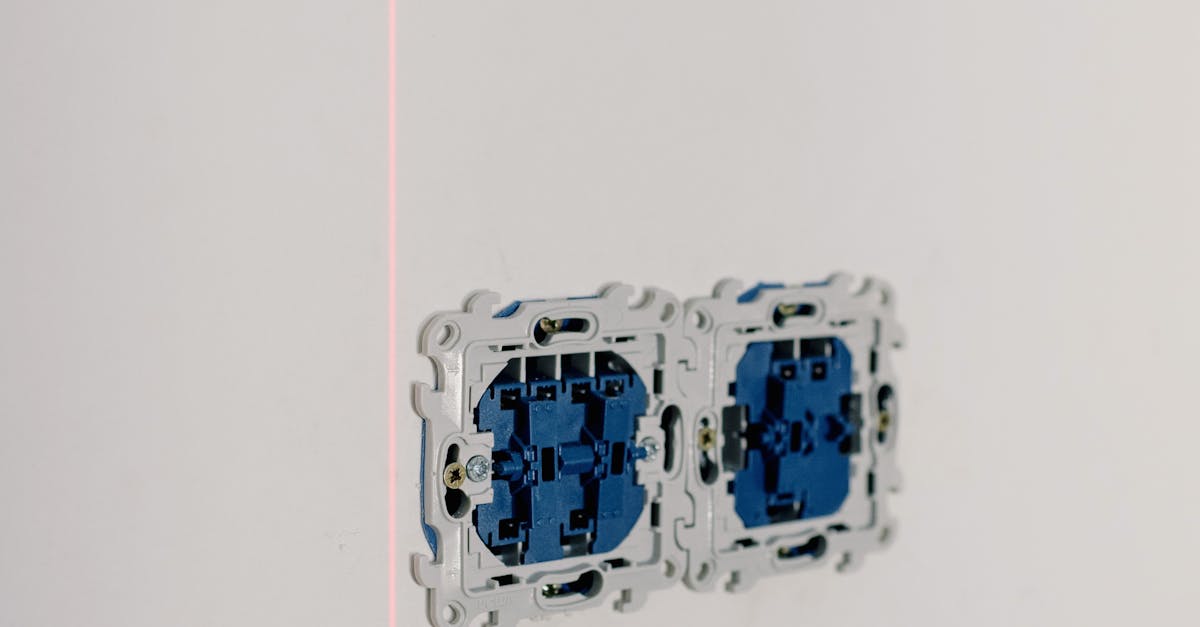
Identifying and Fixing Temperature Control Issues in Your Fridge
Table Of Contents
Evaluating the Cooling System
A well-functioning cooling system is essential for the effective operation of your refrigerator. Begin by checking the temperature settings to ensure they are within the appropriate range, typically between 2°C and 5°C for the fridge compartment and -15°C to -18°C for the freezer. Any deviation from these temperatures could indicate an underlying issue. Moreover, assess the refrigerator’s operation sounds; unfamiliar noises may suggest problems with components such as the compressor or fans.
Regular maintenance plays a critical role in the cooling system's efficiency. Inspect the door seals for wear and tear, as damaged seals can lead to cold air escaping and compromise temperature control. Additionally, pay attention to airflow around the fridge. Ensure that there is enough space around the appliance to allow heat to dissipate. Overcrowding the fridge can restrict air circulation, preventing optimal cooling performance. By evaluating these aspects, you can identify potential issues early before they escalate into more significant problems.
Understanding Compressor and Fan Functions
The compressor plays a crucial role in the refrigeration cycle. It compresses the refrigerant gas, increasing its pressure and temperature before sending it to the condenser coils. This process enables the refrigerant to release its heat and cool down before entering the evaporator coils. A malfunctioning compressor can lead to inadequate cooling and, subsequently, spoilage of stored food items.
Fans in a refrigerator serve to circulate cold air throughout the interior. The evaporator fan, located near the evaporator coils, ensures even distribution of chilled air, while the condenser fan is responsible for expelling heat from the coils outside the unit. If either fan fails to operate efficiently or becomes blocked by dust, the unit may struggle to maintain a consistent temperature, impacting overall performance. Regular maintenance of these components is essential for optimal fridge operation.
Cleaning the Condenser Coils
Condenser coils play a crucial role in the cooling process of your fridge. Over time, dust and debris accumulate on these coils, hindering their efficiency. When the coils are dirty, the fridge has to work harder to expel heat, leading to increased energy consumption and potential overheating. A thorough cleaning can restore proper airflow and enhance the overall performance of the refrigerator.
To clean the condenser coils effectively, first, unplug the fridge for safety. Using a vacuum cleaner with a brush attachment or a soft brush, carefully remove dust and dirt buildup from the coils. If the coils are located in a tight space, a coil cleaning brush can be particularly useful. Regular maintenance is essential, so it's advisable to check and clean the coils every six months or so to ensure optimal operation and longevity of the appliance.
The Effect of Dust and Debris on Efficiency
Accumulation of dust and debris on condenser coils can significantly impair a fridge's cooling efficiency. When these coils become dirty, they can't effectively dissipate heat. This inefficiency forces the compressor to work harder, leading to increased energy consumption and higher utility bills.
Regular cleaning of the condenser coils is essential to maintain optimal performance. Simple tasks like vacuuming or wiping down these areas can prevent disruptions in airflow. Keeping these components clean promotes better cooling and prolongs the life of the appliance.
Recognising Refrigerant Leaks
Low refrigerant levels can indicate a leak within the system, leading to insufficient cooling. Users might notice that their fridge struggles to maintain the desired temperature. Ice buildup inside the evaporator coils is another common symptom, showing that refrigerant is not circulating properly. If hissing or bubbling noises are heard, these may also signal escaping refrigerant.
Identifying a refrigerant leak requires careful observation. A frosty evaporator coil can be a warning sign, as it typically signifies that the refrigerant is not flowing as it should. Additionally, the presence of oily residue around the coils or connections is often an indicator of refrigerant loss. Regular checks on these elements can help maintain efficient operation and prolong the lifespan of the refrigerator.
Symptoms and Signs of Low Refrigerant Levels
When the refrigerant levels drop, the fridge may struggle to maintain the desired temperature. This often manifests as food not staying adequately chilled, particularly in warmer areas of the appliance. Other signs include frost build-up on evaporator coils or the unit running continuously without cycling off. These symptoms indicate that the cooling efficiency is compromised.
A decrease in refrigerant levels may also cause unusual noises from the fridge’s compressor. Clicking or hissing sounds can signal trouble within the system. It's important to investigate any irregularities promptly to prevent further damage. Early detection of these symptoms can help preserve the longevity of your appliance while ensuring optimal performance.
FAQS
What are common signs that my fridge is not cooling properly?
Common signs include food spoiling quickly, a constant warm interior, condensation or frost buildup, and unusual noises coming from the fridge.
How often should I clean the condenser coils?
It is recommended to clean the condenser coils at least twice a year to maintain optimal efficiency and cooling performance.
What should I do if I suspect a refrigerant leak?
If you suspect a refrigerant leak, it's best to contact a qualified technician to assess the situation, as handling refrigerants requires specific expertise and safety precautions.
Can I fix compressor or fan issues myself?
While some minor fan issues may be fixable with simple troubleshooting, compressor problems often require professional assistance due to their complexity and the risk of further damage.
How can I improve my fridge's cooling efficiency?
You can improve cooling efficiency by regularly cleaning the condenser coils, ensuring proper temperature settings, organising food to allow for better air circulation, and checking door seals for any leaks.
Related Links
How to Troubleshoot a Refrigerator Door Seal FailureUnderstanding Common Refrigerator Problems in Melbourne Homes
Addressing Electrical Issues in Refrigerators
What to Do When Your Fridge Freezer is Icing Up
Solutions for Leaking Refrigerators and Preventive Measures